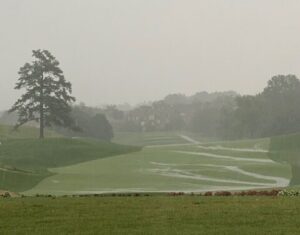
It has become abundantly clear that men’s professional golf is in complete disarray, and it’s
unclear how long it will take for the dust to settle and stability to emerge. After months of discussions
and issues, not to mention setbacks from interested parties (looking at you Phil), the emergence and
subsequent relatively strong support among players of the Saudi Arabian-backed LIV tour has now come
quickly and looks to continue to build throughout this year, into the next and beyond. Even with this
clear and public threat looming, the PGA Tour somehow was caught flat-footed, and is scrambling to
determine how they deal with something that is now existential. To date, the Tour has simply tried to
throw money at the problem, but against the seemingly bottomless pit that seems to exist for LIV Tour
backing, there is no way such solutions will work. Sawgrass, we have a problem.
Aside from the four majors, unless this issue somehow is resolved sooner than most think,
men’s professional golf seems to be heading towards an extended period of bifurcation. But for years,
again aside from the majors and some marquee tournaments, the PGA Tour product has been diluted
and already somewhat bifurcated. Tournaments struggle to get top players, so fields week in and week
out are not strong. Hence the emergence of LIV and a reckoning that was coming whether folks at the
PGA Tour acknowledged it or not. It has been the subject of and will continue to be the subject of a lot
of discussions, tweets, podcasts, etc., going forward, but that’s likely the extent of this blog’s take on the
issue for now.
Instead, what is striking is that while the men’s professional game flounders, golf overall is
flourishing. Rounds played remain up and availability seems to be increasing with help from municipal
courses being renovated and improved. Playability continues to be emphasized on course designs and
additions at courses, with the need for a long and hard par 72 hole course being thrown out the
window. Instead, we have short courses, par three courses, putting courses and courses that encourage
anyone and everyone to play. In short, for many who love the game and those who are new to it, recent
developments have shown that in fact, golf is fun.
So, with all of the money being thrown around to some professional men, now more than ever,
there seems to be a clear and distinct break between the game most amateurs play and what is
televised each week (not to mention that the women’s professional game if more relatable and often a
better product to watch). Sure, it’s fun to play courses the pros play or play the same balls or clubs, but
what these last few months have shown us is that men’s professional golf is really a completely and
utterly different game. So, let’s stop trying to emulate it or frankly, putting too much emphasis on it (but
please roll back their ball) and instead focus on how we’re incredibly lucky to be in an amateur golf
renaissance.
Golf is such a unique and incredible game that us diehards love playing – and we now have even
a better opportunity to play incredible, beautiful and FUN courses. For most other sports, the focus for
many is on watching – think, college and professional football and basketball, pro baseball, etc. Sure,
many do play these sports as well, but for a large number it’s the viewing experience. Golf is different –
most who love watching it also love playing it, and I doubt there is anyone who would substitute
watching a pro play the Old Course versus playing it themselves.
So let’s not focus on the PGA-LIV battle, but instead remember that we’re living (no pun
intended) in an incredible time to be playing the game. I could care less who signs up for LIV now that
the 2022 majors are over or after the FedEx Cup, but I do care what the weather’s going to be on a Friday
and making sure everything is set for my next golf trip. I hope that the men’s professional game can get
to a better place, but it won’t take away from my love of the game and my belief that now, more than
ever, it really is time to go play.



